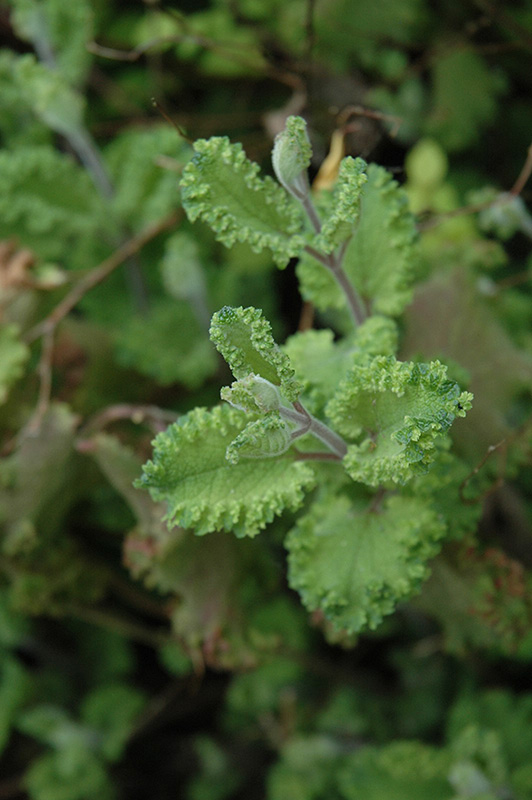Variegated Curly Wood Sage
Teucrium scorodonia 'Crispum Marginatum'
Plant Height: 10 inches
Flower Height: 14 inches
Spread: 24 inches
Sunlight:
![]()
![]()
Hardiness Zone: 8
Description:
A perfect groundcover for dry shade; lovely soft green leaves with fluted and ruffled edges flecked with creamy white; flowers are subtle but still interesting; a beautiful, textural groundcover that is low maintenance
Ornamental Features
Variegated Curly Wood Sage's attractive crinkled heart-shaped leaves remain green in colour with distinctive creamy white edges throughout the year on a plant with a mounded habit of growth. It features subtle spikes of creamy white flowers rising above the foliage in mid summer.
Landscape Attributes
Variegated Curly Wood Sage is an herbaceous evergreen perennial with a mounded form. Its relatively fine texture sets it apart from other garden plants with less refined foliage.
This is a relatively low maintenance plant, and is best cleaned up in early spring before it resumes active growth for the season. Deer don't particularly care for this plant and will usually leave it alone in favor of tastier treats. It has no significant negative characteristics.
Variegated Curly Wood Sage is recommended for the following landscape applications;
- Mass Planting
- Rock/Alpine Gardens
- General Garden Use
- Herb Gardens
Planting & Growing
Variegated Curly Wood Sage will grow to be about 10 inches tall at maturity extending to 14 inches tall with the flowers, with a spread of 24 inches. Its foliage tends to remain low and dense right to the ground. It grows at a medium rate, and under ideal conditions can be expected to live for approximately 10 years. As an evegreen perennial, this plant will typically keep its form and foliage year-round.
This plant does best in full sun to partial shade. It is very adaptable to both dry and moist locations, and should do just fine under typical garden conditions. It is considered to be drought-tolerant, and thus makes an ideal choice for a low-water garden or xeriscape application. It is not particular as to soil type or pH. It is somewhat tolerant of urban pollution. Consider covering it with a thick layer of mulch in winter to protect it in exposed locations or colder microclimates. This is a selected variety of a species not originally from North America. It can be propagated by division; however, as a cultivated variety, be aware that it may be subject to certain restrictions or prohibitions on propagation.

